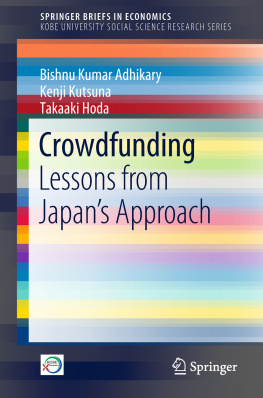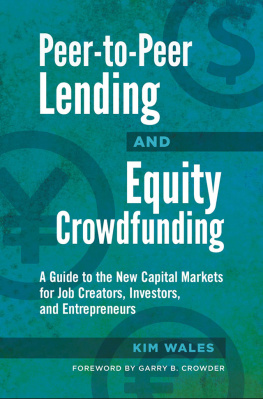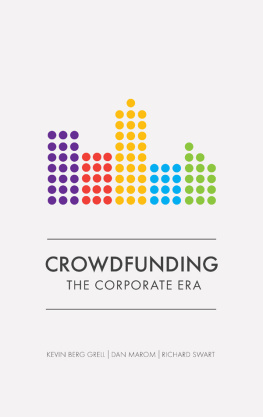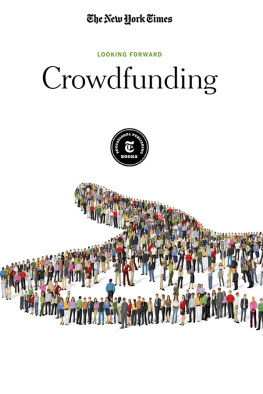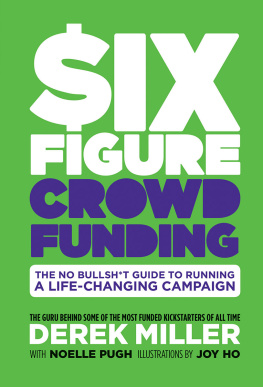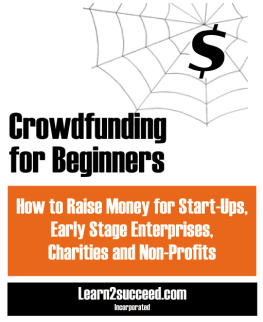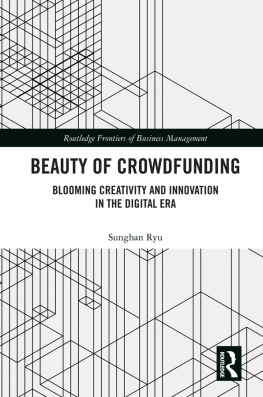1.1 What Is Crowdfunding?
Crowdfunding can be defined as a practice of funding startups or small firms or a project by raising small amounts of money from a large number of people utilizing online social media such as Facebook, Twitter, LinkedIn and other specialized blogs. It is an organized collective effort of many non-professional people who are embedded in trust to finance a venture via the internet. It is a market-based approach to finance entrepreneurial firms that lack capital for growth and development. It is also known as social lending (Hulme and Wright ).
The term Crowdfunding is derived from another term crowdsourcing that refers to the process of obtaining needed services, assets, knowledge, or ideas by soliciting contributions from a large number of individuals, a crowd of people especially from the online community rather than from the traditional employees or suppliers. In the case of crowdfunding, the same process is followed in procuring funds. However, the objective of crowdfunding is to finance a project or an idea or to help a philanthropic organization by soliciting funds in a tiny unit from mass people. As Lambert and Schwienbacher () note,
Crowdfunding involves an open call, essentially through the internet, for the provision of financial resources either in the form of donations (without rewards) or in exchange for some form of reward and/or voting rights in order to support initiatives for specific purposes. [Lambert and Schwienbacher , p. 6]
In fact, crowdfunding can be viewed as a by-product of information technology. This new form of financial technology emerged in the wake of 2008 financial meltdown in response to the increased difficulties faced by the small business entrepreneurs in obtaining funds from the traditional banking system. Its underlying foundation is rooted in the three factors: trust, internet technology, and willingness of the people. In addition to raising funds for the entrepreneurs, crowdfunding is a technique to validate entrepreneurial project by the potential user groups at the shortest possible time.
Notably, the traditional method of raising finance for a project includes preparation of a business plan, the undertaking of market research and then approaching wealthy individuals, banks, angel investors and venture capital firms limiting the fund raisers option to a few key players. Crowdfunding, on the other hand, expands the fund raisers reach and players as he can advertise his presence to a large number and variety of potential investors through the presence of online crowdfunding platforms or social media. Simultaneously, it helps fund suppliers to the reduction in transaction cost of investment by providing them opportunities to act as a quasi-monitor of the investee firms because the data on available investment opportunities and the reaction of other fund suppliers can be centrally accessed under the crowdfunding system.
1.3 Evolution of Crowdfunding
Although Crowdfunding is only recently starting to capture global interest as an alternative investment vehicle, crowdfunding has been around in less conspicuous forms for hundreds of years. Whenever we put a few dollars in the offering plate at church, chip into fund a Christmas party for neighborhood children, or give to a charitable organization, we are effectively participating in crowdfunding. Notable examples of veritable crowd campaigns are the funding of the pedestal of the Statue of Liberty and the Empire State Building.
Modern-day crowdfunding, however, came into being in the 1990s when some platforms for charity fundraising and projects funded by Internet-based campaigns emerged into the forefront. The UK-based charity fundraising platform JustGiving was founded in the year 2000. Then, ArtistShare, a reward-based crowdfunding platform (CFP), was founded by Brian Camelio in 2000 with the idea that fans would finance production costs for albums sold only on the Internet and artists also would enjoy much more favorable contract terms. Other reward-based platforms continued to emerge. A well-known and heralded example was Sellaband, founded by Hollands Pim Betist in 2005. Sellabands model allowed artists to build a fan base, receive contributions under a product presale model (in this case, a record album), and if the contribution level reached the target threshold, produce, market, and distribute albums.
In the year 2005, the first ever platform where entrepreneurs could lend money to develop their ideas was launched. This platform was called Kiva. Today, Kiva is one of the most successful micro-lending platforms all over the world. Kivas success led to the mushrooming of more such peer to peer lending platforms like Zopa, Prosper, Lending Club and so on. Another popular crowdfunding platform Indiegogo came to be launched in the year 2008. Then, Kickstarter appeared within a year in 2009. Both these platforms are extremely preferred in the current crowdfunding market. The difference between these crowdfunding platforms and other crowdfunding platforms is that in these platforms the investors do not get their money back but instead receive rewards depending on the plan of the project owner.

